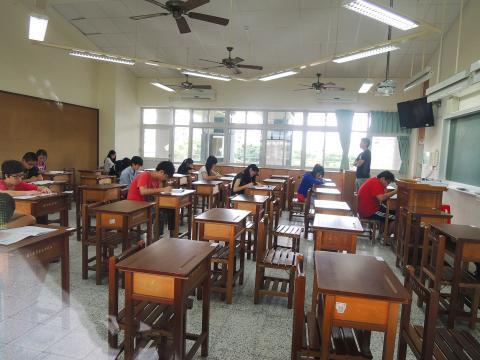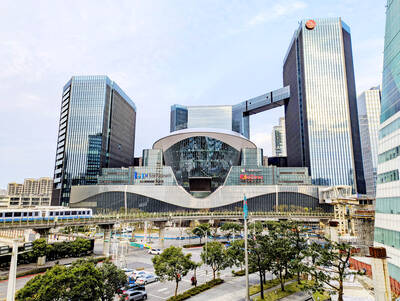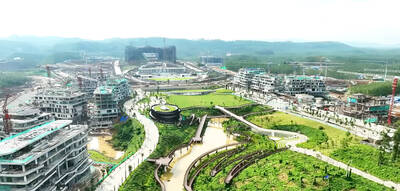According to an investigation conducted by the Ministry of the Interior, there are 120 plots of land covering 46 hectares that were expropriated by the government for yet-to-be-built schools, and 103 of those plots have been sitting there waiting to be developed for more than 20 years. Most of the plots have been left unused as fallow land, while some have been turned into simple sports grounds, green parks, or, in some cases, are being occupied by local residents.
The ministry says that, due to the fertility crisis, land that was expropriated for building schools more than 20 years ago will probably never actually see schools built. Hsinchu City, Chiayi City, Taitung County, Penghu County, Kinmen County and Lianchiang County are the only municipalities that have used all expropriated land that was originally intended for building schools. Among the other municipalities, Greater Taichung, with 39 plots, has the greatest amount of unused land that was initially expropriated for building schools. Greater Kaohsiung comes in second place with 16 plots, while Taipei comes in third with 10 unused plots of land.
Despite this, local governments would still like to keep 80 plots of land to build schools, and are only willing to put 25 of the plots up for city planning review to possibly change the use of the land for other purposes.

Photo: Hu Chien-sen, Liberty Times
照片:自由時報記者胡健森
The ministry says that its Urban Planning Commission will be gradually re-examining and improving the situation, comprehensively looking at unused plots of land that were intended for the construction of schools from an urban planning perspective so that the land can hopefully be used for a merited purpose.
(Liberty Times, Translated by Kyle Jeffcoat)
根據內政部調查,全國約有一二○處已徵收卻未興建學校的學校用地,面積逾四十六公頃,其中一○三處徵收時間超過二十年,卻仍遲未開闢,目前多數土地現狀為荒蕪未使用,或做簡易運動場、綠美化公園,甚至部分遭民眾佔用。
內政部表示,面對少子化衝擊,各縣市手中逾二十年未開闢卻已徵收的學校用地,未來將更難興建學校。目前僅新竹市、嘉義市、台東縣、澎湖縣、金門縣、連江縣等縣市內沒有已徵收尚未使用的學校用地,其餘縣市均有,以台中市最多,約有三十九處;高雄次之,約有十六處;台北市有十處,是已徵收、但閒置學校用地第三多的縣市。
就算如此,各縣市政府仍認為其中八十處應保留做為開闢學校用途,僅二十五處願意列入都市計畫檢討,欲變更為其他使用分區用地。
內政部表示,將透過內政部都市計畫委員會逐步審議與改善,將閒置學校用地納入都市計畫通盤檢討,期望達到地盡其用及符合土地正義的目標。
(自由時報記者徐義平)

The human body was not built for spaceflight, with its microgravity conditions, exposure to high-energy radiation and other issues. As a result, trekking beyond the Earth’s confines causes many physiological changes that affect an astronaut’s health. The issue gained new currency with the March mission to return astronauts Butch Wilmore and Suni Williams to Earth after they were stranded on the International Space Station (ISS) for nine months. WHY IS SPACE TRAVEL TOUGH ON THE HUMAN BODY? The human body evolved over millions of years to function optimally in Earth’s environment, which includes its gravity, atmospheric composition and relatively low levels of

A: Yet another shopping mall has just opened in Taipei. B: Do you mean the Mitsui Shopping Park LaLaport Nangang? A: Yeah, the shopping mall run by Japanese Mitsui & Co. opened last week. B: I hear the mall features about 300 stores, Vieshow Cinemas and Japanese Lopia supermarket. A: With the opening, a war is breaking out between Taipei’s department stores. A: 台北又有新的購物商場可逛啦。 B: 你是說Mitsui Shopping Park LaLaport 南港? A: 對啊這家日本三井集團旗下的商場上週開幕。 B: 聽說商場有威秀影城、樂比亞日系超市,還有多達300家專櫃。 A: 新商場一開幕,看來又要掀起一場百貨大戰啦! (By Eddy Chang, Taipei Times/台北時報張迪)

Indonesia is undertaking an ambitious project to relocate its capital from Jakarta to Nusantara, a new city in the province of East Kalimantan. This bold endeavor aims to address the severe environmental challenges and urban congestion plaguing Jakarta. The current capital city struggles with acute air pollution, frequent flooding, and rapid land subsidence. Experts predict that by 2050, a third of Jakarta could be submerged. The primary causes include excessive groundwater extraction and rising sea levels attributed to climate change. Moreover, with a population of over 10 million, it’s very much the economic center of the country. Unfortunately, this

A: Hey, didn’t you go to the opening of the Mitsui Shopping Park LaLaport Nangang last week? B: Yeah, there are about 300 shops, including the first overseas branch of Japan’s Mahou Dokoro — a famous Harry Potter-themed store. A: Wow, I’ve always wanted to get a magic wand. B: There are also a bunch of great restaurants, such as Smart Fish hotpot restaurant. A: I wish I had Harry Potter’s “apparition” and “disapparition” magic, so I could teleport to the mall right now. A: 你上週不是有去LaLaport南港的盛大開幕嗎?有什麼特別的? B: 那裡有多達300家專櫃,包括魔法之地的海外首店——它可是日本知名的《哈利波特》專賣店。 A: 哇我一直想買根魔杖。 B: 另外還有各式各樣的美食,像是林聰明沙鍋魚頭。 A: 真希望我也有哈利波特的「現影術/消影術」魔法,能瞬間移動到商場去! (By Eddy Chang, Taipei Times/台北時報張迪)